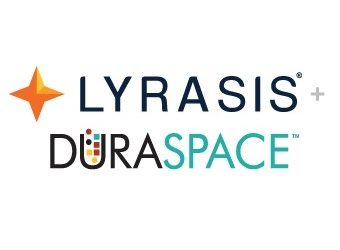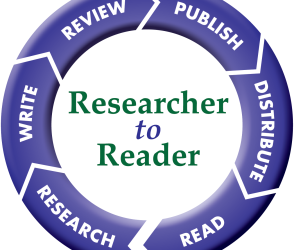Continuing our Kitchen Essentials series of interviews with leaders of infrastructure organizations, today we are hearing from Laurie G. Arp, Senior Director, Community Supported Technologies and Hosting Services at Lyrasis, the membership organization whose mission is to support enduring access to the world’s shared academic, scientific and cultural heritage through leadership in open technologies, content services, digital solutions and collaboration with archives, libraries, museums and knowledge communities worldwide.
Please tell us a bit about yourself — your role at Lyrasis, how you got there, and why you embarked on a career in research infrastructure?
I came to my current role in a somewhat circuitous path. I started grad school with the intention of becoming a history professor, but I found myself drawn to the research infrastructure. I changed course and pursued an MLIS with an emphasis in archives. I started off as an archivist at the Ohio Historical Society when many new technological innovations were taking hold in cultural heritage. I was excited to lead early digitization projects such as the African American Experience in Ohio and Ohio Memory, and create electronic records policies (ERC). I originally joined Lyrasis, through its predecessor organization Palinet, in 2009 to create a mass digitization program. Over time, opportunities arose for me to expand my leadership roles involving open-source infrastructure. My portfolio includes ArchivesSpace, CollectionSpace, DSpace, Fedora, and VIVO. I also direct our Hosting Services. Most of the positions I have served in were ones I never envisioned (many hadn’t existed previously). But looking back on the work, they all met at the intersection of collections, people, and technology.
What do you like most and least about working in research infrastructure?
I work with remarkable people. From the dedicated staff that I manage to the governance groups and communities we support, I draw energy from the dedication that these individuals have for the open technologies and the communities they serve. They have a shared sense of commitment to open-source principles such as transparency, collaborative processes, and open access. Their willingness to engage in continued efforts is inspiring. I see firsthand the impact these individuals and groups working together can have on the global community.
A challenging aspect of research infrastructure for open source, community-driven software is the need to compete with proprietary systems. We have more limited resources, but we work deliberately with the community, and that allows us to increase the impact community members can have, ensure a wide range of voices are heard, and thoroughly test systems. But it can be difficult to communicate those benefits when users compare these community-supported systems against software systems from more resourced, for-profit companies that are more expensive and potentially restrictive in the long-term. Users expect open source technologies to be as rapid as the vendors in fixing bugs and releasing new versions, but it is challenging to plan and work as quickly with in-kind voluntary contributions.
Based on your own experiences, what advice would you give someone starting, or thinking of starting, a career in research infrastructure?
It would likely be the same advice I would give anyone pursuing any career. I would encourage them to consider what they believe in and want they want to achieve. There are many ways to engage in the research infrastructure ecosystem, from small, incremental steps, such as participating in an event or contributing a bug fix, to more involved ways such as serving on governance, becoming a member, or contributing expertise. While it can be intimidating to initiate outreach to unfamiliar groups, they are welcoming. Open technologies depend on scale and community-driven contributions. It all makes a difference. Find ways to get involved and you will discover that all contributions are meaningful, and you will soon find yourself immersed in new communities.
What sort of infrastructure does Lyrasis provide, and who are your users?
With an organizational history dating back to 1936, Lyrasis is a membership-driven organization with an active membership of over 1,100 libraries, museums, and archives around the world. With our long history of service, our programs and initiatives are varied and sometimes complex.
John Wilkin, our CEO, has written about the landscape of radical interdependence…
“Lyrasis plays a pivotal role in this changing landscape. Efforts in our community to address common needs evolved from conversations to cooperation to, ultimately, collaboration. In this collaborative environment, our institutional needs are best addressed when we operate with a sense of radical interdependence. In this landscape of radical interdependence, Lyrasis serves as the connective tissue, by design and intention.”
As part of this work, I am honored to head the new Community Supported Technologies and Hosting Services division. A recent essay describes our work to realign systems and services to increase impact. As the organizational home to ArchivesSpace, CollectionSpace, DSpace, Fedora, and VIVO, Lyrasis supports these programs within the larger infrastructure. Moreover, these technologies and their communities support the larger system of institutional repositories, research intelligence, research information systems, and research data, while also supporting efforts such as open access and FAIR data principles.
Lyrasis also serves a strong role in terms of licensing, open access and scholarly communication. My colleague Celeste Feather recently wrote about trends and directions in this area.
How is Lyrasis sustained financially?
Lyrasis is a non-profit that is sustained by both membership and services.
Lyrasis works closely with leading granting agencies on projects that benefit community programs. Grants are opportunities for targeted or strategic growth. For example, IMLS grants enabled us to develop migration tools to upgrade users to Fedora 6. Mellon Foundation funding enabled us to pivot CollectionSpace from a community-supported membership model to a Lyrasis-supported services model.
Guided by nonprofit principles, our mission is to empower libraries, archives, and museums by providing services that align with the mission and values of our members and clients. By not focusing on profit, we can prioritize important efforts. Our role as an organizational home to open-source communities creates opportunities for mutual benefits for program members. For example, DSpace members that become Lyrasis DSpace Direct hosting clients get a discounted hosting rate.
We strive to create an environment conducive to develop and grow sustainable programs, but also develop frameworks such as It Takes a Village to enable open technologies to foster sustainability. Our financial goals include not only sustaining and growing Lyrasis but generating sufficient revenue to invest in strategic initiatives. Examples include offering innovative programs for Lyrasis members such as the Catalyst Fund, contributing to the DSpace Development Fund to support accessibility, and enhancing our hosting services.
As a leader of a research infrastructure organization, what do you think are the biggest opportunities we’ve not yet realized as a community — and what’s stopping us?
So much innovative work is going on but there are new and continuing challenges. One challenge is sustaining and growing solutions that can continue to provide reliable infrastructure for the future. Depending on situations or histories, it can be easier to get funding or attention for a new solution than working to invest in existing ones.
Harkening back to John Wilkin’s concept of radical interdependence, a pivotal opportunity is in front of us to rethink the existing technologies as a larger ecosystem as opposed to individual, siloed solutions. We at Lyrasis and those within our communities have highlighted the opportunities but we need to start taking concrete steps towards those overall goals.
Looking at your own organization, what are you most proud of, and what keeps you awake at night?
One of the best things about working at Lyrasis is the deep mission and values alignment that the staff shares with members, clients, and the communities we serve. We are committed to nonprofit principles because we believe in the work we do and the impact we can have on our community.
One of the challenges with community-supported technologies and services is sustainability and growth. We have been deliberate about researching and implementing ways to enhance and support open-source communities. We were proud to spearhead and share the It Takes a Village Guidebook and Toolkit to help open-source communities (and others) with their long-term sustainability.
As a nonprofit, we are very intentional around trying to keep costs low but that can mean we have fewer resources to invest to continue improving and enhancing our solutions. Lyrasis has a history of working to stay lean and agile to serve our community. Our values, commitment, and connection are deep, but it is an ongoing challenge to have the resources to continue to invest and be able to compete with for-profit infrastructure.
What impact has/does/will AI have on Lyrasis?
There are certainly lots of opportunities for AI to improve things. It would be ideal if AI could simplify more routine tasks and free our dedicated and innovative staff to take on more complicated and engaging initiatives. But I think we are all aware of some of the potential dangers AI brings in terms of propagating misinformation and discord. There is a great need to work with our community and reach understandings about the best ways to incorporate AI into our collective work.
What changes do you think we’ll see in terms of the overall research infrastructure over the next five to ten years, and how will they impact the kinds of roles you’ll be hiring for at Lyrasis?
Lyrasis is of, for, and part of the community and we are always working to determine how we can serve and work with our ever-evolving landscape.
While I mentioned program sustainability earlier, each institution/member also is thinking about their own sustainability and how they can remain viable while continuing to effectively serve their audiences. As institutions look at needs and constraints, we see an increasing shift in resources, in response to being more efficient. Helping institutions move from self-hosting technology solutions to the use of trusted hosting services is one way we hope to provide efficient, effective solutions that help them. As mentioned in the essay:
“Hosting is not only more cost-effective over time, it is also a strategic decision as it can empower staff to focus on critical local collections, service to their community and system demands instead. Often the choice is one of focus: delivery of services to our communities or managing and maintaining software, migrations and even hardware.”
In terms of roles at Lyrasis, each time a role becomes vacant, it is an opportunity to review the position and see how and if we can want to rethink it. It enables us to continue to adapt, create new roles, and allow staff to grow into new functions. We have been able to add new roles to help meet the evolving needs that we see.
We also see opportunities to support the larger ecosystem over standalone technologies. As we work to create more integrations and connections between open solutions, they will create and support a more interconnected ecosystem.




